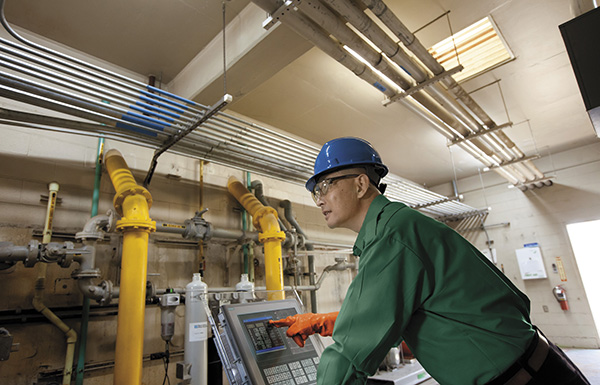Could the Internet of Things help trigger a new period of economic growth?
Posted By Kevin Dallas
General Manager
When it comes to the kind of landmark, disruptive technologies that have changed the face of economies and nations, there is a very short, debatable list: monumental developments such as electricity, flight, automobiles, the telephone, the PC.
Today there may or may not be that Edison or Tesla working on building the next invention that changes everything. Innovation may not come from a single person or even a single company. But as the economy in the developed world has largely shifted during the past several years, there is also no doubt that the continued evolution of technologies is providing a solid platform for innovation that can lead to the next big wave of economic opportunity. Witness the impact that mobile phones are having across the world.

Thinking and reading about these issues, I often catch myself watching for that next technology boost that will really change things. Where are we heading over the next decade and beyond? I’m on record, of course, as saying the Internet of Things (IoT) has the potential to play a part in building that new, new economy, and it’s interesting to see the emerging consensus on exactly that.
In one recent example, citing a paper from the Progressive Policy Institute (PPI), Rebecca Grant at Venturebeat.com said the IoT could be the “kick in the pants the U.S. economy needs.”
The PPI’s paper cites data from the McKinsey Global Institute* projecting a $2.7–$6.2 trillion (with a “tr”) gain from the IoT globally, with the U.S. reaping a third of it, equating to a 2–5 percent increase in U.S. GDP by 2025. That could be enough, says PPI, to move the U.S. out of the 1–2 percent growth “rut” it’s been in for a decade and closer to the 3 percent considered healthy by economists. Thus, the IoT could become an integral part in returning the developed world’s economy to a growth phase.
While the Internet itself has contributed much to the world’s economy, we are still in the early phases of realizing its impact on productivity and investment. The process of connecting machines in the same way we’ve connected people and information is not only becoming an industry in itself, it’s also a technology with the potential to help some industries reinvent and tack back toward a course for growth.
Says PPI: “…the Internet of Everything potentially has the capability of transforming ‘physical’ activities such as manufacturing, energy, transportation, healthcare, and public sector services such as waste collection…a network of sensors in a factory, for example, hooked to powerful data analysis capacity, could greatly improve the productivity and flexibility of production, and perhaps lead to a rebirth of manufacturing in the U.S.”
At Microsoft, we’re getting a front-row seat to see this happen with our own customers on a global scale. Kuka Systems Group, for example, has built an intelligent system based on Windows Embedded that connects and helps control more than 60,000 devices on a factory floor used to produce more than 700 Jeep Wrangler bodies every day. Sensors in the factory’s robots monitor wear and tear proactively, allowing Kuka to keep the shop humming about 20 hours a day without costly work stoppages.
New York-based Lido Stone Works has used a similar approach to overhaul its business of manufacturing stone architectural accents. Since their implementation, Lido has improved its productivity by 30 percent. That increase has led to a 70 percent growth in revenue, and a corresponding 67 percent increase in the company’s work force.
Another customer, Giletta SPa, has developed a system that connects salt-spreader trucks to GPS systems, automating the flow of road-clearing salt and thereby helping cities across Europe to keep the lights on during winter storms, saving millions every year in terms of both salt consumption and economic production.
When it comes to the IoT, it is already evident that the combination of these mini-revolutions on a company-by-company, city-by-city basis has the power to contribute to productivity, profitability, and yes, growth, as the developed world grapples with what its economy will look like over the next 50 years.
As Venturebeat’s Grant points out, however: “The potential is there, but like many technological advancements, it will take some time to filter into the mainstream.”
How much time? There’s no telling. But I can say firsthand that the technology is here today, and we are seeing new companies every day who are making strides toward becoming smarter, leaner and more productive by tapping into the Internet of Things.
*Source: James Manyika, Michael Chui, Jacques Bughin, Richard Dobbs, Peter Bisson and Alex Marrs, “ Disruptive technologies: Advances that will transform life, business, and the global economy. ” McKinsey & Company, www.mckinsey.com/insights , May 2013.